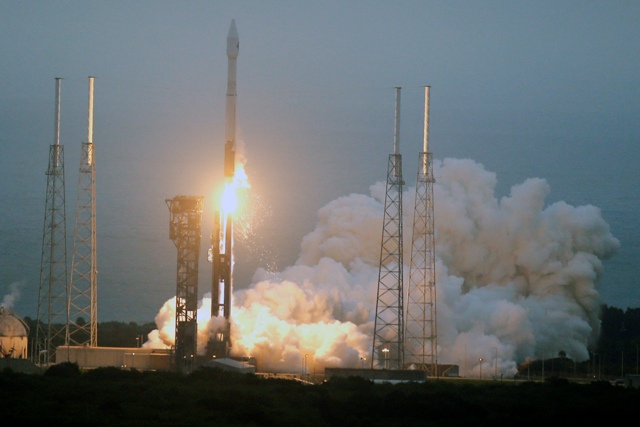-
Tips for becoming a good boxer - November 6, 2020
-
7 expert tips for making your hens night a memorable one - November 6, 2020
-
5 reasons to host your Christmas party on a cruise boat - November 6, 2020
-
What to do when you’re charged with a crime - November 6, 2020
-
Should you get one or multiple dogs? Here’s all you need to know - November 3, 2020
-
A Guide: How to Build Your Very Own Magic Mirror - February 14, 2019
-
Our Top Inspirational Baseball Stars - November 24, 2018
-
Five Tech Tools That Will Help You Turn Your Blog into a Business - November 24, 2018
-
How to Indulge on Vacation without Expanding Your Waist - November 9, 2018
-
5 Strategies for Businesses to Appeal to Today’s Increasingly Mobile-Crazed Customers - November 9, 2018
Atlas V rocket lifted off with Cygnus Cargo Spaceship to ISS
A spacecraft carrying much-needed U.S. supplies has blasted off towards the International Space Station.
Advertisement
A United Launch Alliance Atlas V rocket lifts off from launch complex 41 at the Cape Canaveral Air Force Station on Sunday, December 6, 2015, in Cape Canaveral, Fla. This marks Orbital ATK’s first successful mission since its Antares rocket exploded over a year ago after launch from Wallops Island in Virginia.
On Sunday, the 194-foot tall Atlas rocket, did just that, blazing through cloudy skies over its seaside Florida launch pad as it headed into space.
New hardware that will support dozens of NASA investigations and other science experiments from around the world is among the more than 7,000 pounds of cargo on the way to the International Space Station aboard Orbital ATK’s Cygnus spacecraft.
Launch from Cape Canaveral Air Force Station occurred at 4:44 pm.
On Sunday, private spaceflight company Orbital ATK returned its Cygnus cargo ship to flight with a superb afternoon launch after a year’s gap. NASA normally likes to have a six-month stash of food aboard the space station, but it’s down a couple months because of the three failed flights.
That’s better than the previous three days, when the weather foiled every effort to make the first US shipment in months.
This is the first time that the United Launch Alliance’s Atlas V has served the space station. Boeing plans to use the Atlas V to launch its commercial crew spacecraft for NASA, the Starliner, as early as 2017. The enhanced Cygnus also uses the latest in lightweight space-qualified electrical power technology with the addition of the company’s UltraFlex solar arrays which were manufactured at Orbital ATK’s Goleta, California facility. Orbital ATK also provides a critical service by providing large-volume pressurized disposal cargo, a unique capability among America’s commercial cargo providers. The second company, SpaceX, also has been grounded by a launch accident and hopes to resume flying this month.
NASA hired out station supply and crew missions to industry, for billions of dollars, as its 30-year shuttle program wound down. It is expected to return to flight by next summer.
“It is our future”, Shireman stressed at a news conference last week.
Advertisement
Cygnus is named the “SS Deke Slayton II” in memory of Deke Slayton, one of the America’s original seven Mercury astronauts.




























